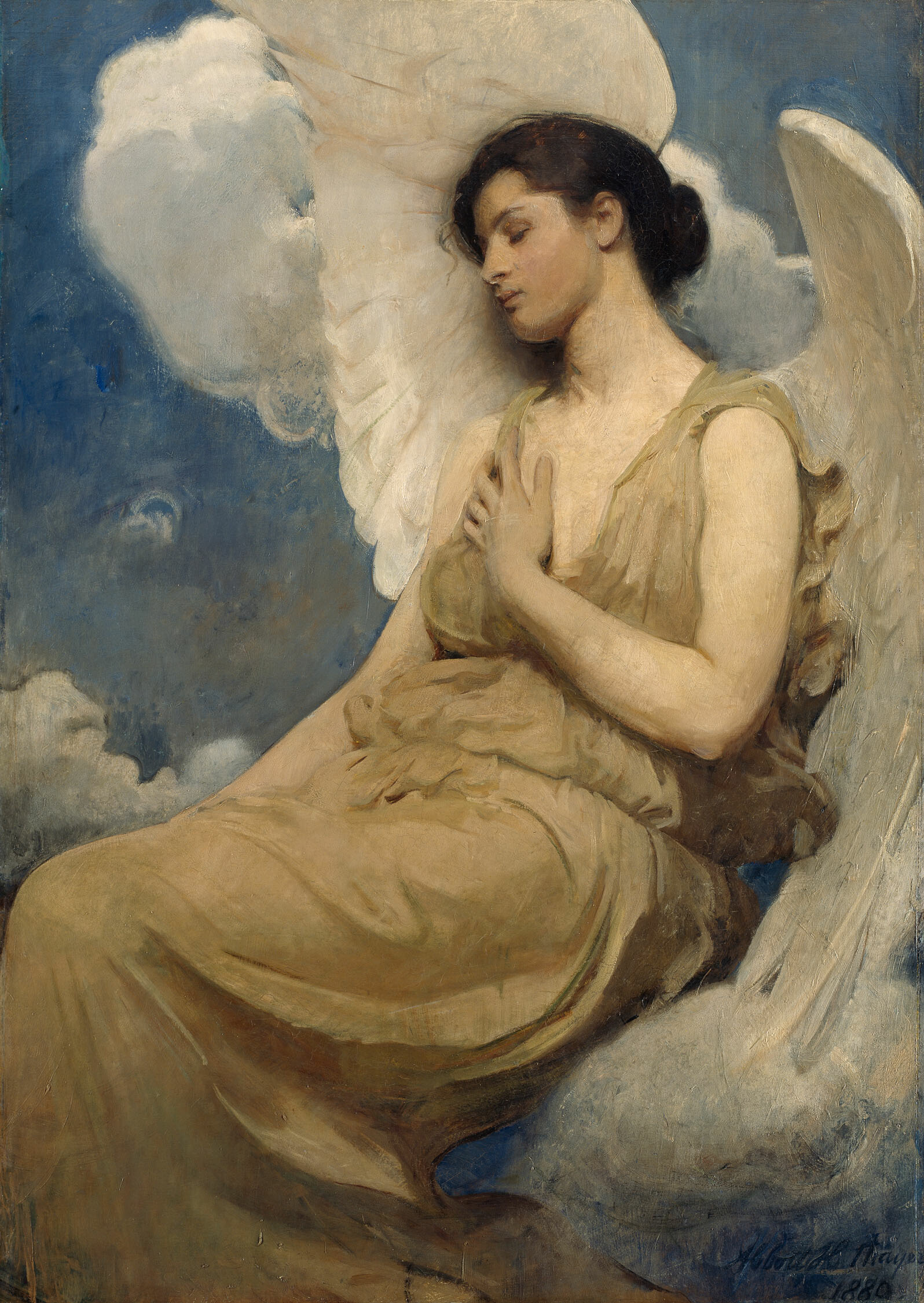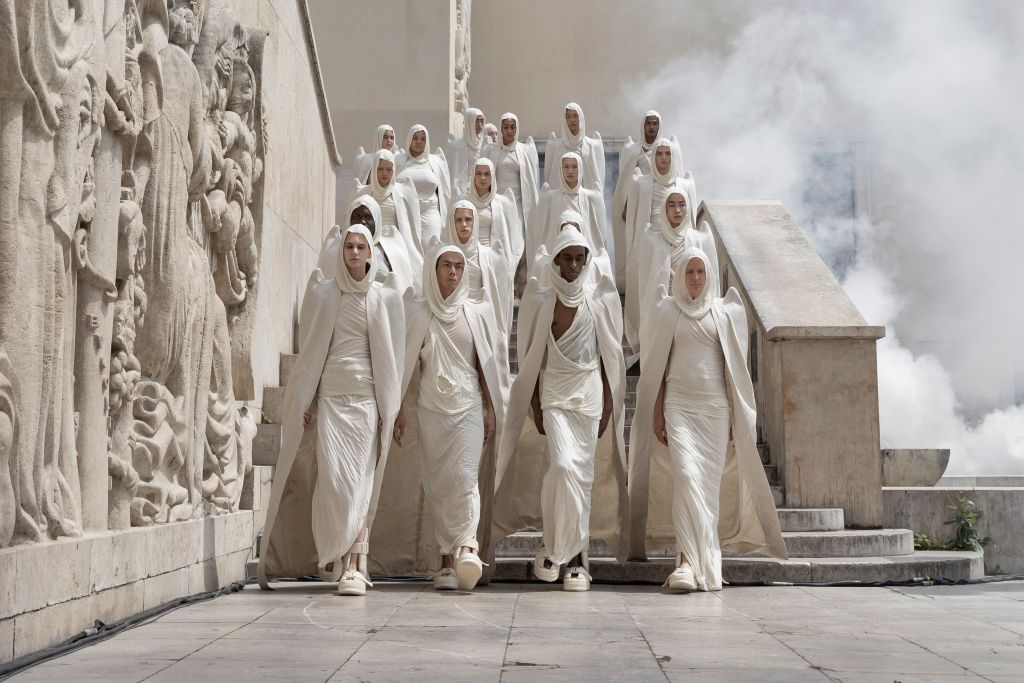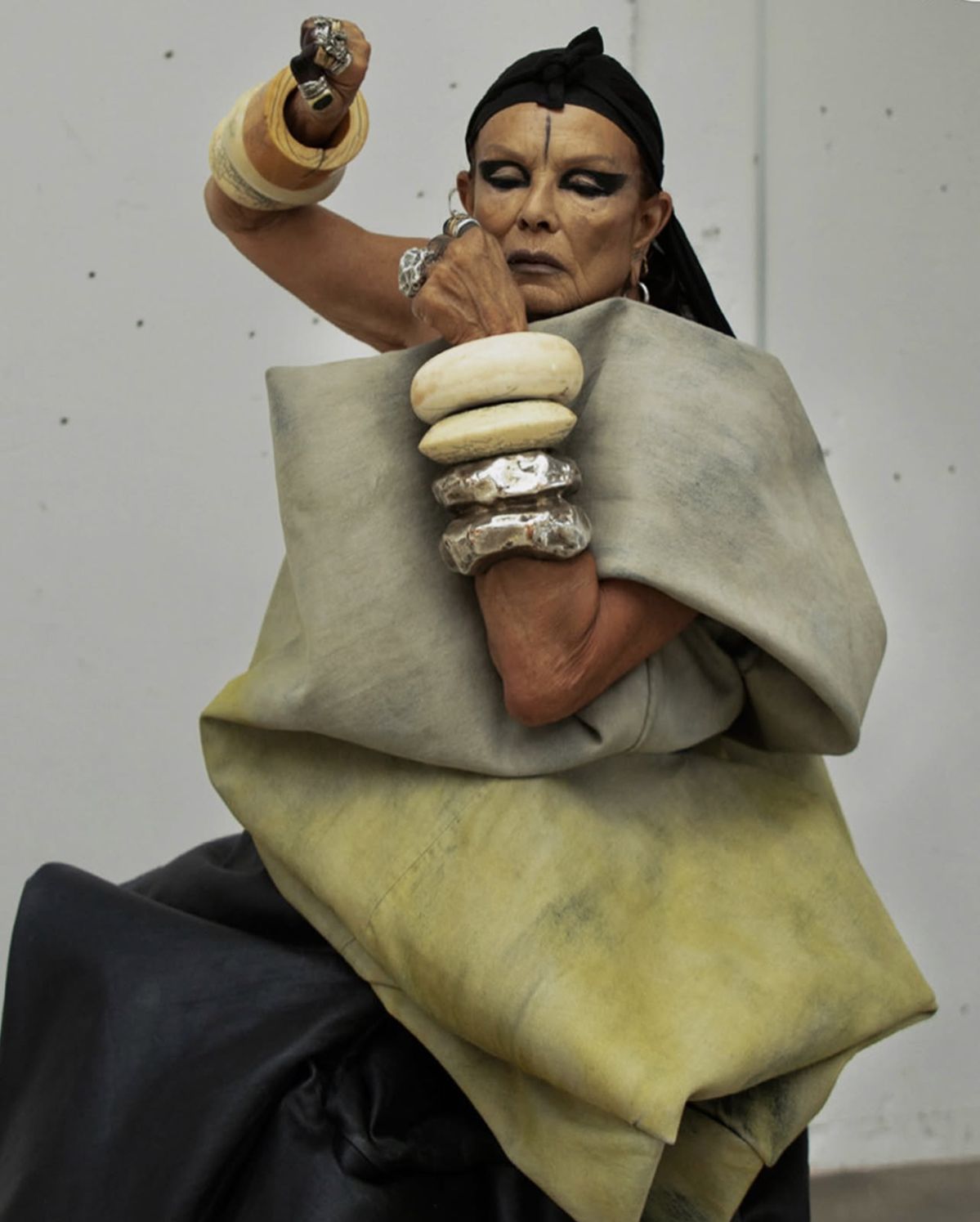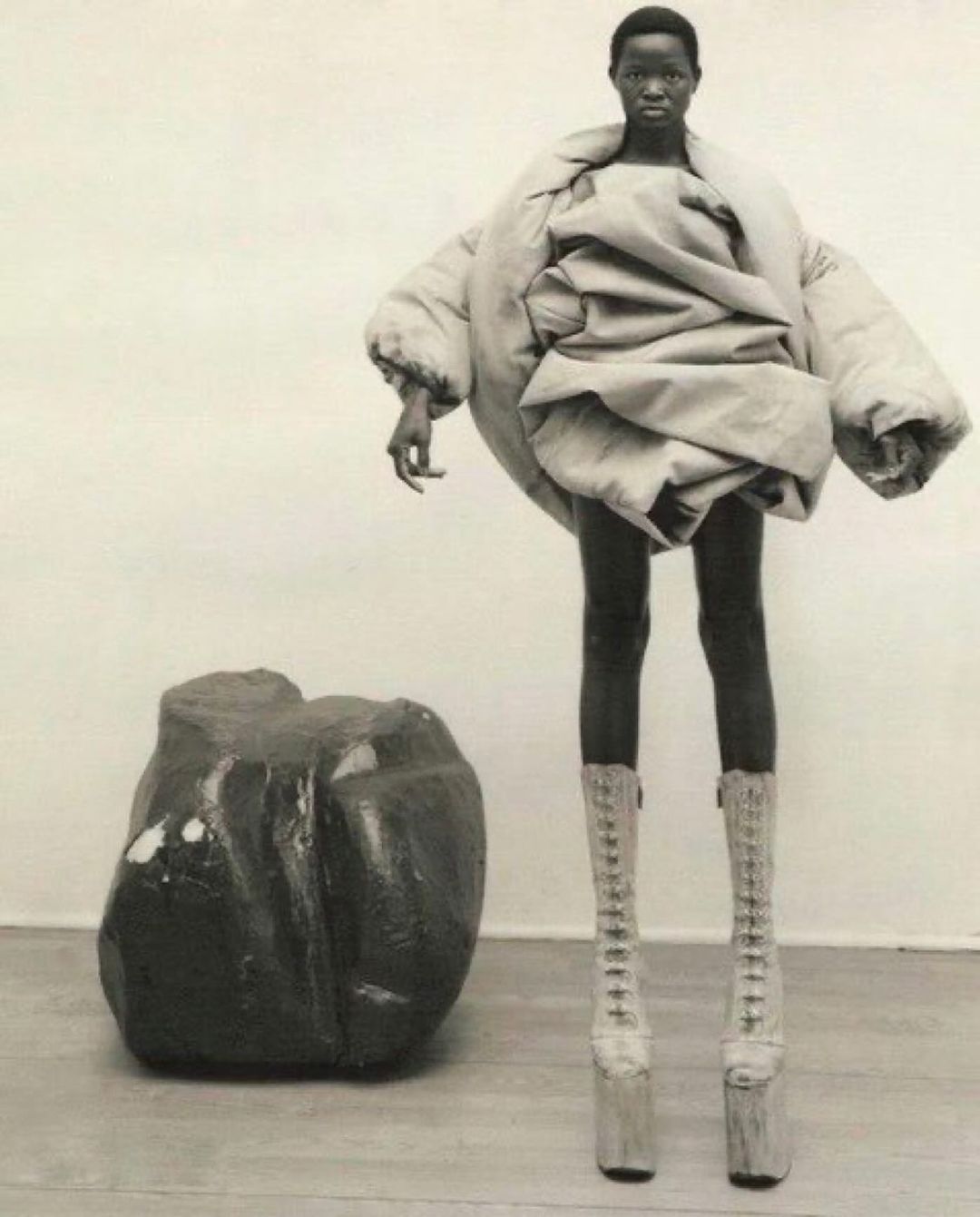Category Fashion
Published July 31, 2025

Winged Figure, by Abbott Handerson Thayer
For over three decades, Rick Owens has built one of the most singular and immersive visions in fashion, governed not by seasonal trend but by personal mythology. Often labelled as the fashion’s “prince of darkness”, such a nickname fails to capture the complexity of his aesthetic. Rick Owens doesn’t just design garments, he creates atmospheres, altars and existential statements.
This philosophy is now on full display at the Palais Galliera in Paris, where the exhibition Temple of Love invites visitors into Owens’s world. We are not just spectators but fashion pilgrims. From the museum’s neoclassical façade, draped in sequinned banners, down to the raw concrete sculptures in its courtyard, Temple of Love becomes a cathedral of Owens’s vision: rigid yet sensual, brutal yet tender.
Inside, more than a hundred silhouettes span his long career, from his early days crafting shredded leather in Los Angeles to his monumental runways in Paris. The exhibition presents fashion as a ritual. Each garment is displayed like a relic: a sacred artefact from a parallel timeline where beauty is shaped by resistance and power is measured in introspection.
Owens’s signature aesthetic is unmistakable. Sculptural and raw, his garments often cloak the body in architectural drapes or severe tailoring. His palette, endless variations of black, ash and dust, evokes ancient materials and sacred decay. Whether it’s a leather tunic resembling religious clothings or a cloak that feels like armour for the soul, Owens’s work communicates not trend but ritual.
Drawing on hands-on experience in Los Angeles’s garment mills, where he mastered the art of replicating designer looks, he launched his own label, named after himself, in 1994. His big break came in 2001 when Vogue Paris featured Kate Moss wearing one of his signature leather jackets, launching his career in a dazzling way.

Rick Owens SS25 “Hollywood” by Donald Gjoka runway at Palais de Tokyo
This sense of spiritual discipline is rooted in Owens’s many inspirations. “Brutalist architecture” plays a crucial role. He has long admired figures like Le Corbusier and Marcel Breuer, whose use of concrete and exposed structure influenced both his clothing and furniture design. His garments, like his self-designed chairs and altar-like installations are
built with precision.
The designer draws from gothic mysticism, catholic imagery and the symbolism of painters like Gustave Moreau, whose mythic figures are echoed in Owens’s elongated silhouettes. Temple of Love interweaves these influences beautifully, juxtaposing Owens’s work with historical artworks, sketches and personal objects that reveal his emotional inner world.
At the centre of both the exhibition and Owens’s career is – of course – Michèle Lamy, his wife and lifelong collaborator. The Palais Galliera devotes space to their creative partnership, including a room representing Owens’s California bedroom and a viewing salon that echoes their shared ritualism. Michèle Lamy is more than a muse, she is a living symbol of the Owens universe: esoteric, poetic, powerful.

Portrait of Michèle Lamy for SSAW Magazine by Kristina Nagel
Michèle Lamy isn’t just Rick Owens’ muse, she’s a vital part of the brand’s DNA. More than a source of inspiration, she’s a collaborator, co-creator and the spiritual force behind the project. While Rick brings structure and minimalism, Michèle adds mysticism. Their partnership is a true creative dialogue that transforms the brand into a complete, living universe, not just fashion but a shared philosophy.
Perhaps most striking is how the exhibition captures Owens’s deep connection to queer identity and subcultural aesthetics. His fashion has always embraced the body as a site of both rebellion and transformation, from the BDSM undertones of his earlier collections to his inclusive casting of non-binary and marginalised bodies. This wasn’t done for effect, but
as a form of cultural reclamation.
Personally, I find Rick Owens and his brand endlessly fascinating, not just because of the aesthetic, but because of the philosophy behind it. He is one of the rare designers who has created a complete, uncompromising world. His work confronts and doesn’t try to please. That, to me, is what makes it powerful. As for the clothes themselves, they’re like sculptural expressions of identity. The way he distorts proportions, the use of texture and the severe silhouettes all speak to something poetic. I admire how his designs can make the wearer feel both vulnerable and invincible at the same time.

Anyiel Majok by Emily Lipson for Re-Edition Magazine, December 2023
Why does Owens’s raw, stark aesthetic endure? Perhaps because it feels authentic, unfiltered and sincere. In an age of powerful social media, Rick Owens refuses to be validated. His ardent fans attend shows dressed head to toe in his designs, none of which are loaned, a rare occurrence these days, when sending a celebrity look from the collection is a good advertising poster. This ritualistic allegiance creates a powerful bond: it’s not what Owens offers his audience that matters, but what he chooses to offer them: his aesthetic fidelity.
In my opinion, Rick Owens’ continued relevance comes down to the fact that his work isn’t just fashion, it is philosophy made wearable. His style resonates because it rejects the performative nature of trend culture and instead embraces something darker, even more honest. People connect with it not just for how it looks, but for the beauty in distortion. In a time when much of fashion feels disposable, Owens offers a kind of permanence with a visual and emotional language. That’s why his work endures.
This exhibition feels like more than just a showcase, it is also a personal invitation from Rick Owens. For long-time admirers, it’s a rare chance to experience the full depth of his creative world. For the general public, it challenges conventional ideas of beauty and design. It’s less about displaying fashion and more about inviting people into his universe on his own terms.


